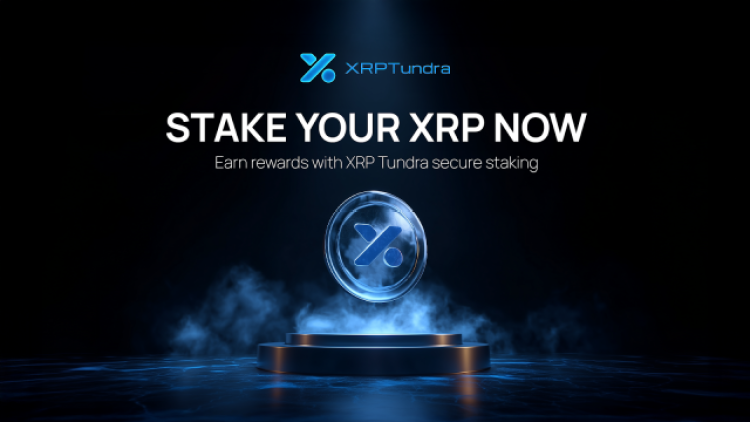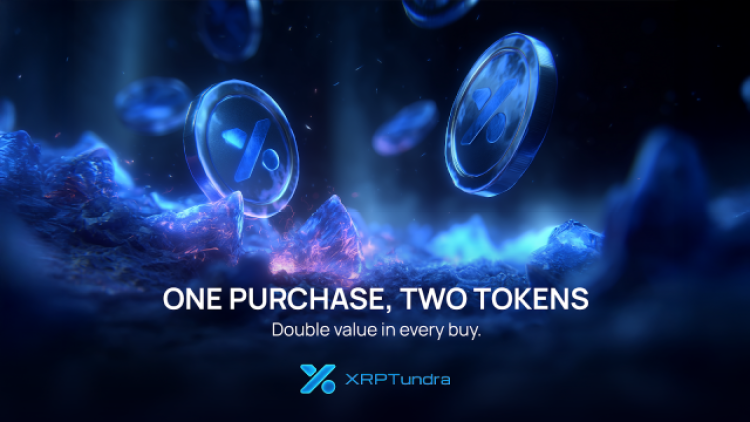
Institutional attention on XRP has intensified following a wave of filings for the first spot XRP exchange-traded funds(ETFs) in the United States. With launch timelines now circulating for late 2025, the conversation around XRP exposure is shifting from passive allocation toward yield-generating, on-chain strategies.
Within this new environment, XRP Tundra stands out as the first dual-chain DeFi ecosystem designed to turn XRP ownership into an active position. Its staking infrastructure, verified through triple independent audits, provides a framework for investors seeking to combine ETF exposure with blockchain-based yield.
XRP ETF Filings Gain Momentum
Regulatory progress accelerated in September 2025 when Canary Global ETF Trust and Bitwise Investments filed updated registration statements for their proposed spot XRP ETFs.
Each filing removed prior delaying provisions, signaling readiness for imminent listing once final comments from the US Securities and Exchange Commission are addressed. Market sources cited in recent disclosures suggest mid-November as a realistic approval window.
According to Bitwise’s amendment, custody arrangements will rely on regulated digital-asset trustees with cold-storage segregation — the same structural model used for existing spot-asset funds. Industry analysts view this as a strong signal that XRP is being positioned alongside the other approved digital ETFs under the same compliance standards.
The shift marks a milestone for the asset, transforming XRP from a payments-network token into a regulated investment instrument suitable for portfolio allocation.
Turning ETF Exposure Into Productive Yield
ETF approval would open institutional access to XRP but, like most fund structures, still represents a passive instrument — tracking price, not network activity. For investors seeking additional performance, yield-based strategies on-chain become the logical extension.
That is the gap XRP Tundra aims to fill. Its model introduces Cryo Vaults, a native staking system that will allow XRP holders to earn up to 20% APY once activation begins. Vault participants maintain self-custody while generating real-time on-chain rewards rather than waiting for secondary distributions.

In combination with ETF exposure, the system creates a layered structure: regulated price access through the ETF, active yield through the Tundra protocol.
The concept reflects a broader move toward hybrid investment design — blending traditional custody and decentralized yield generation. In this model, XRP functions as both a regulated asset and a productive one.
XRP Tundra’s Dual-Token Architecture
The architecture behind this approach separates functionality across two blockchains. TUNDRA-S, built on Solana, powers liquidity and staking rewards, while TUNDRA-X, native to the XRP Ledger, governs system proposals, reserves, and future Layer-2 coordination under the upcoming GlacierChain framework.
This separation ensures that reward logic and governance remain distinct — a structure verified by three independent audits: Cyberscope, Solidproof, and FreshCoins. Together, they confirm contract integrity, emission control, and cross-chain communication between Solana and XRPL environments.

Current Phase 9 presale terms price TUNDRA-S at $0.147 (+11 % bonus) with a TUNDRA-X reference of $0.0735. Confirmed listing prices — $2.50 for TUNDRA-S and $1.25 for TUNDRA-X — provide a transparent benchmark for early participants before Cryo Vault staking begins.
For a concise breakdown of audited DeFi projects and staking economics, Ben Crypto recently analyzed multi-chain presales and their impact on institutional strategy.
What Comes Next for XRP and Tundra
If the first spot XRP ETF goes live as expected in November 2025, institutional portfolios will finally have compliant exposure to the asset’s price movement. From there, the focus turns to on-chain yield integration, where projects like Tundra provide the infrastructure for active management.
The roadmap ahead includes three pillars:
- Cryo Vault Activation: Enabling staking for XRP holders with flexible lock periods and transparent APY structures.
- GlacierChain Launch: A dedicated Layer-2 on XRPL linking governance to automated compliance modules, allowing verifiable reporting for institutional partners.
- Expanded Liquidity Pools: Integration with Solana-based automated market makers to sustain staking yields through real economic flow.
Each stage extends the verified framework established during Tundra’s audit cycle, maintaining the same security and disclosure standards as the project scales. The roadmap aims to integrate ETF-driven liquidity directly with on-chain staking functions, creating a verifiable link between regulated market access and decentralized yield generation.

Active Management Becomes the New Standard
For investors preparing to enter the XRP ETF market, the question extends beyond access — it concerns what to do nextwith that exposure. XRP Tundra’s audited staking model offers one possible answer: transform static holdings into active positions that generate verifiable on-chain yield while maintaining transparency.
As regulated ETFs bring capital into the ecosystem, Tundra provides a mechanism for that capital to participate in network-level economics. In an industry where security, compliance, and transparency now define success, XRP Tundra delivers a structure built for both institutional reliability and community engagement.
Explore how XRP Tundra’s staking architecture complements the coming XRP ETF era:
Buy Tundra Now: official XRP Tundra website
How To Buy Tundra: step-by-step guide
Security and Trust: FreshCoins audit
Join the Community: Telegram
This article is not financial advice. Please DYOR before investing in cryptocurrency.
Authored by Bitcoinist, https://bitcoinist.com/crypto-etf-investors-act-xrp-tundra-enables-active-xrp-strategies/


















